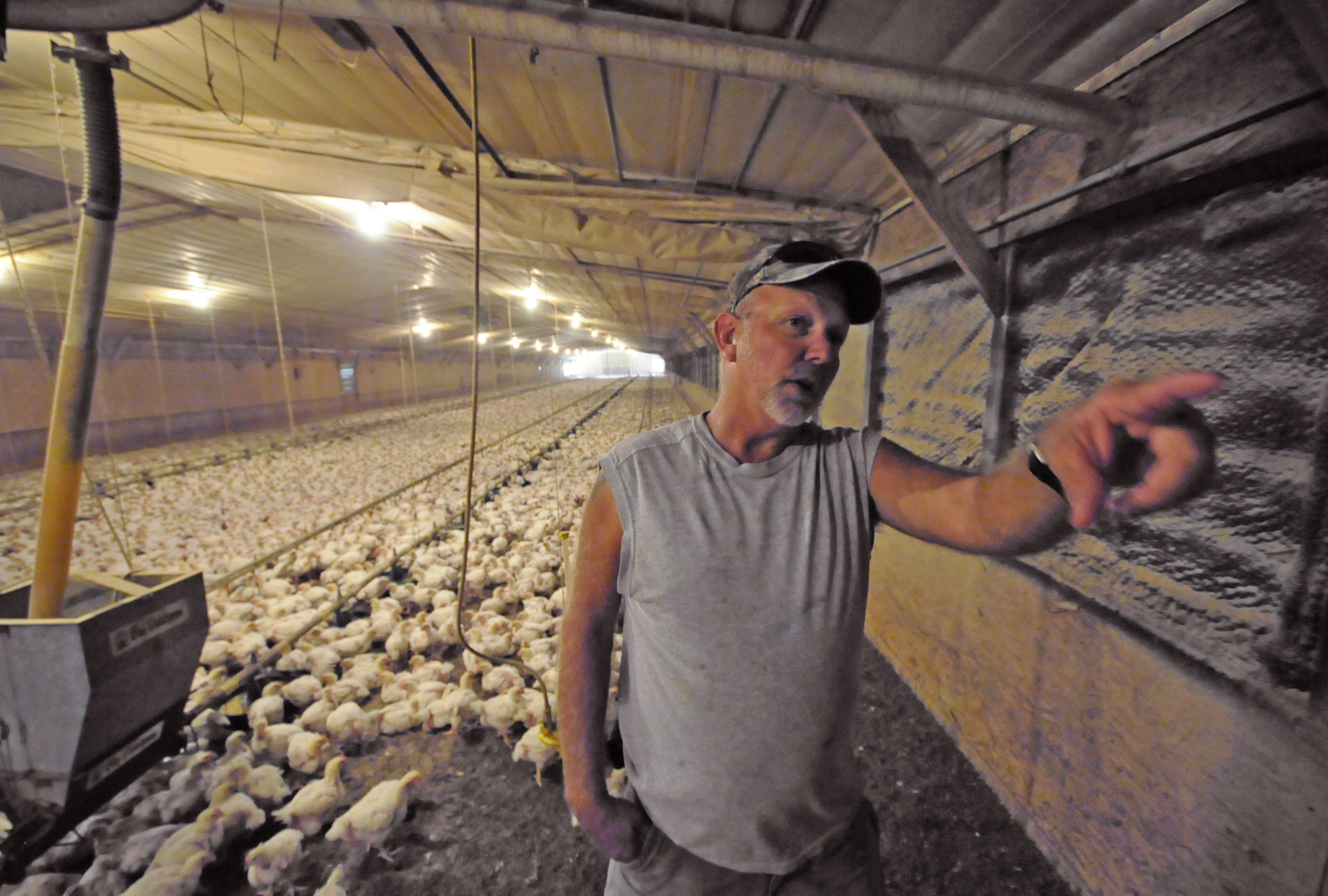Producers keep watch to keep their birds alive
Sunday, August 14, 2011
Todd Layne spends his mornings hunched over, weeding the dead birds out of his flock.
Years ago, this month's heat would have meant a lot of work. The life of a broiler is slaved to the temperature, and with two record-setting, 100-or-higher degree days this month, the 40- by 500-foot houses that each hold 29,500 of Layne's chickens risked reaching dangerous temperatures if not closely monitored.
"You could lose this whole house of chickens in 10 minutes," he said, standing amidst an ocean of the 23-day-old cluckers.
Before his Whitwell, Tenn., houses became highly efficient, computer-monitored facilities, Layne walked them several times daily, checking thermometers to make sure the birds weren't roasting while they were roosting. If temperatures rose above ideal growing temperatures - above 92 degrees for chicks or above 68 degrees for full-grown chickens - he would raise curtains running down the side of the houses and rely on the air blowing through to keep the birds cool.
But natural breezes just weren't cutting it. If the birds got too hot they'd stop eating, too cold and they'd stop moving altogether.
Like most chicken farmers today, each of Layne's houses is outfitted with 11 computer-controlled fans able to cool the temperature 1 degree each with wind chill. Along the walls are 6-inch thick cooling pads, which absorb water to be blown into the air. This drops temperatures by another 10 to 14 degrees, giving Layne a 25-degree controlled cooling range.
But even with that control, August's consistent mid-90s highs pose problems.
"It's a tough time during the heat like that, trying to keep the birds as cool as possible," said Norman Edwards, Walker County Agricultural Extension agent. "The longer period of time they've had to keep them, the more feed they've had to feed them and things like that. It's tough, but comparing them to a corn field that doesn't get any rain, it's not as damaging."
Despite the heat, Layne said his current flock is doing well. He lost 623 birds the first week, a normal amount, he said, then only 165 the next week and 111 the third.
With those expected losses, Layne sees between $7,000 and $8,000 of revenue per house, not bad for a job that takes him on average less than five hours each day.
"That's the story of chicken growing. It's like a regular job; you just work for yourself," he said. "I don't ever regret growing chickens."
Layne is one of 170 growers for Chattanooga's Pilgrim's Pride poultry processing plant. He sends the plant a little fewer than 60,000 chickens seven or eight times a year, just a small portion of the 230,000 birds they process daily.
Still, he plays an important part in the company. Of the eight growers in his area, he usually comes in around third for the best weight-to-feed ratio.
"I've finished on the top," he said. "I've never finished on the bottom, thank the Lord."
Layne, like most other chicken growers, is paid to raise the processor's chicks to between 4 and 41/2 pounds. Pilgrim's Pride sends Layne the birds and the feed and takes care of the processing, marketing and sales end of the business. Layne is responsible for the houses - a $70,000 investment each - and the water, electric and gas bills.
Of course, without farmers, poultry processors would have nothing to process, and without the corporations, chicken farmers wouldn't be able to handle the costs of the chicken business.
"It would make it impossible for them to be in business. It would be more capital than a farmer could afford," said Dan Cunningham, management and economics professor at the University of Georgia's Poultry Science Department. "It's a shared responsibility."
Across the region, that responsibility is huge. Chicken farming is the No. 1 agricultural industry in the Southeast, Cunningham said. With about 4,000 broiler farms, Georgia is the top poultry producer in the country.
But as Layne finishes his day, poking his head in on his flock to make sure all is well, he's happy just to be managing his share of the country's food supply.
"You have a job to do, and you just have to do it," he said. "It's been well worth it."

